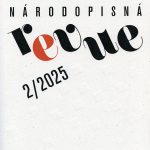
This article explores public representations (in the sense of Dan Sperber) of the Slovak-Ukrainian border, examining its multi-layered nature from the geopolitical level to social practices and cultural productions. It focuses on the creation of border representations through a specific medium: a set of information panels installed in the Slovak borderlands since 2017. These panels are conceptualized as a medium that thematises and reproduces specific images and discourses related to the state border. The content communicated through the panels is interpreted as a tool of politics of memory and the construction of cross-border memory. In the final section, the article draws on excerpts from interviews with local residents to illustrate competing representations of the border and highlights the questions of temporality and situationality inherent in these representations.
The study analyses the (re)definition of the borders between Eastern and Western Europe against the backdrop of a liturgical reform undertaken in Ukraine in 2023 – specifically, the shift of Christmas celebrations from January to December. This step is interpreted as a significant political act and a symbolic distancing from the Russian Federation, as well as a step towards aligning with the European cultural sphere. Attention is also paid to the diversity of attitudes toward this change among Ukrainians living in Ukraine and those in Slovakia. The alteration of the liturgical calendar thus reflects a broader transformation of Ukrainian identity in the context of the rethinking the geographical and mental boundaries of Europe.
This study explores the Vallée des Saints sculpture park as a symbolic space embodying historical, cultural, and religious memory in Brittany. Building on Norbert Elias’s The Civilizing Process, it interprets civilisation and culture as complementary value-based choices shaped by distinct geocultural contexts. The success of the sculpture park, it is argued, lies in its dual function: fostering a sense of local community while simultaneously reinforcing a broader European identity. This is achieved through the integration of Celtic, Breton, French, and Christian elements, and through its capacity to mediate between multiple geocultural spheres.
The study examines the delimitation of the Hanakian dialects from the earliest sources to the present day. It shows how a term originally applied narrowly to dialects spoken in the Haná river basin gradually evolved to refer to a broader Central Moravian area. It analyses both linguistic and extralinguistic criteria used to define these dialects and draws attention to discrepancies between the boundaries of the Hanakian dialects and the ethnographic region of Haná. The study also addresses the colloquial term 'hanáčtina' and the contemporary status of these dialects as a component of regional identity. The text is supplemented with examples of historical dialect maps and a synthetic map showing the boundaries of central zone of the Central Moravian dialects and the Central Moravian dialect group, including its intersection with the Haná region.
Rozhovor
O písních, jejich nositelích a důležitosti terénního výzkumu. Rozhovor s jubilantkou Martou Toncrovou (Lucie Uhlíková)
Společenská kronika
Vilmos Voigt neodišiel… (1940 – 2025) (József Liszka)
Konference
Unwriting – 17. mezinárodní konference SIEF v Aberdeenu (Barbora Navrátilová)
Proměny obyčejové tradice a její současné vnímání (Ilona Vojancová)
Výstavy
Od partyzánek po sparty. Kuřáctví v socialistickém Československu (Marta Ulrychová)
Výstava Hitler ist kaputt! (Marta Ulrychová)
Recenze
M. Válka: Kamenina na Moravě. K procesu industrializace keramické výroby v 19. století (Jiří Pajer)
I. Šafránková: Ozvěny vzpomínek ze staré Šumavy (Marta Ulrychová)
Contents in English
10553
10552
10551
10550
10549